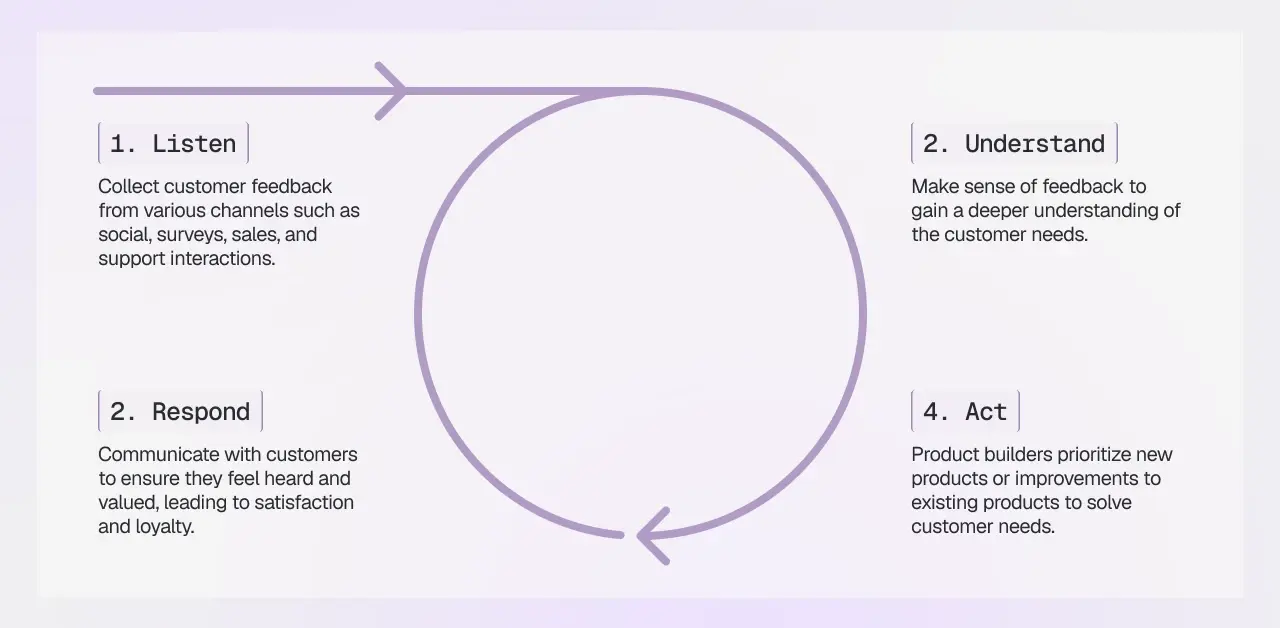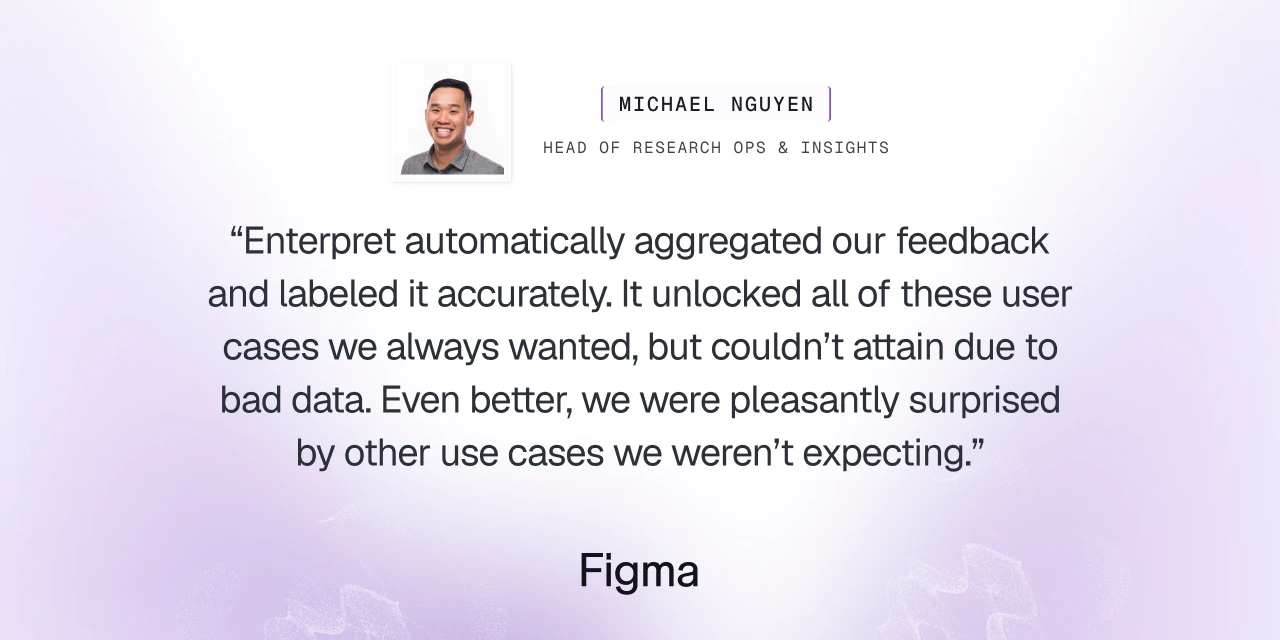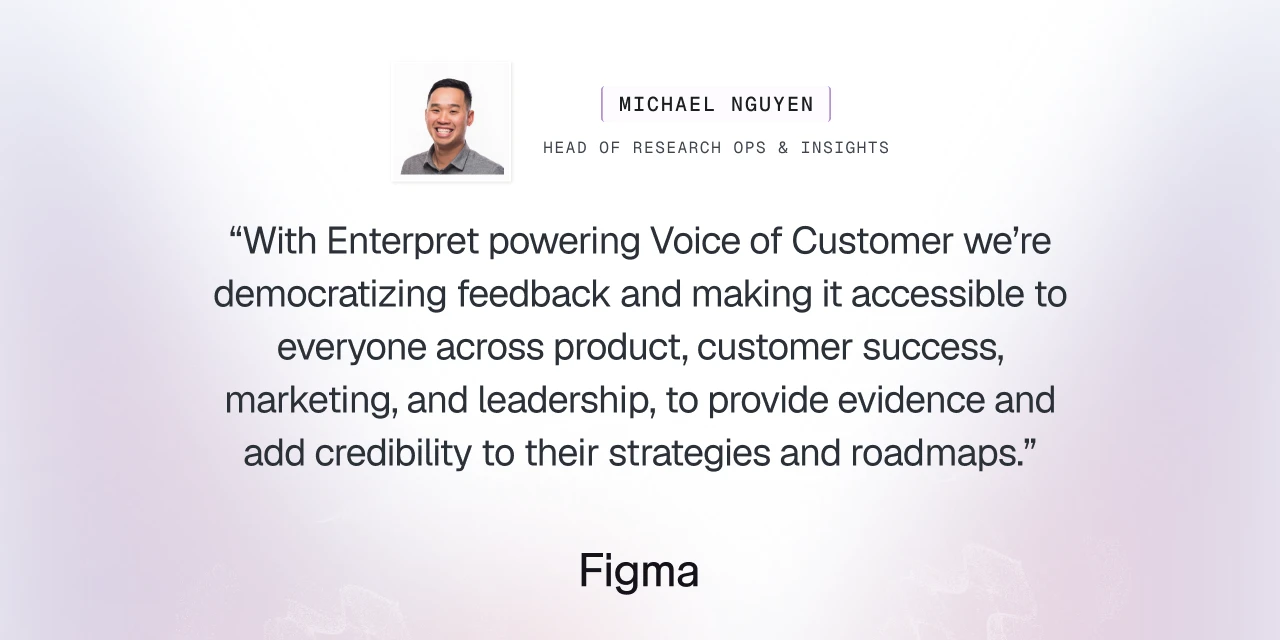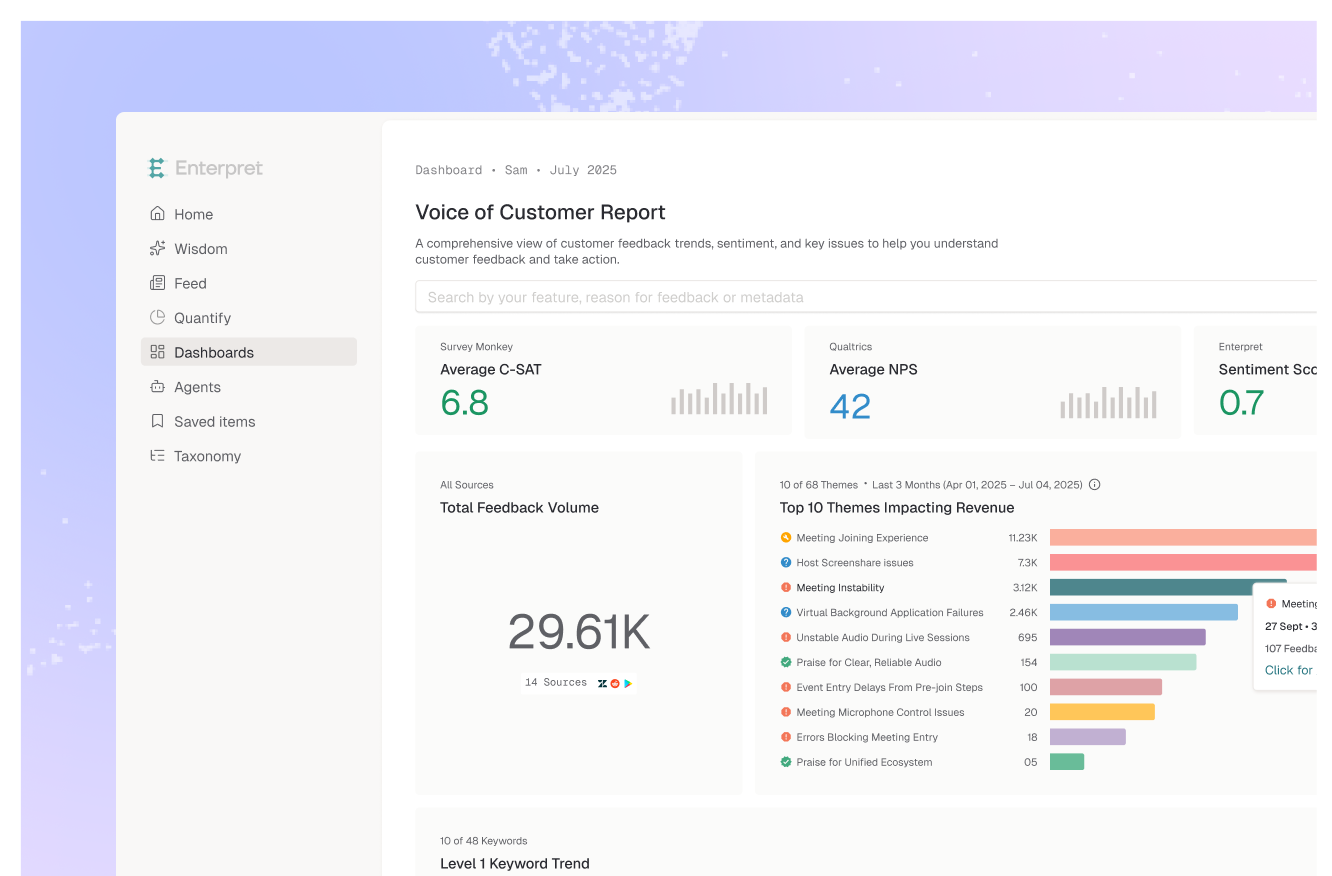How Figma leverages AI to scale its product feedback loops

Our CEO, Varun sat down with Michael, who leads the Research Ops and Insights team at Figma to learn how his team is leveraging AI to scale its product feedback loops. During their conversation, Michael shared his journey for establishing and scaling a voice of customer program and his perspective on how AI can power a user-focused product strategy in the present and future.
Starting the Voice of Customer function at Figma
As Figma was launching the FigJam beta, Michael was hired to build a Voice of Customer program to organize and make sense of all the incoming customer feedback.
To start, Michael focused on these core challenges, many of which are common for companies that aspire to build great products.
- Where do I find feedback? Many folks didn’t know where feedback was shared and how to find submitted feedback.
- No single source of truth. There are too many places to look and people to ask to find relevant feedback.
- Feedback is good. Feedback with context is better. Feedback without context rarely inspires action, creating a frustrating result for everyone involved.
- Closing the loop isn’t great. Internal teams aren’t totally bought into the practice of sharing feedback because they’re not sure how it’s used.
These challenges might seem small on their own, but for a company like Figma that focuses on building with their users, these challenges add up. Solving these challenges isn’t just a nice-to-have; it's key to keeping their user-focused culture strong as Figma grows.
The building blocks of a Voice of Customer program
So how is Michael tackling these challenges at Figma? The team is taking a page from the Voice of the Customer strategy pioneers, who back in the '80s and '90s laid the groundwork for a customer-centric approach in business.

While the tools and technologies have evolved, the core principles of putting customers at the center of the loop remain the same.
- Listen: Collect customer feedback from various channels (social, surveys, sales, and support interactions).
- Understand: Make sense of feedback to gain a deep understanding of customer needs.
- Act: Product builders prioritize new products or improvements to existing products to solve customer needs.
- Respond: Communicate with customers to ensure they feel heard and valued, leading to satisfaction and loyalty.
Scaling Voice of Customer is part of Figma’s product strategy
Scaling a VoC program isn't just about collecting more data or involving more teams; it is about knowing where to focus and which audiences to prioritize. Michael tackled this challenge head-on by organizing the VoC initiatives and tools around three core capabilities:
- Alignment Conduct a ranking exercise as an input to each planning cycle
- Awareness Standardizing the feedback loop between customer-facing teams and product builders to foster trust and increase awareness
- Analysis Aggregate and automatically label feedback using Enterpret as the single source of truth for customer feedback
Michael’s tips for scaling your VoC program
- Customize to Optimize: Start by diving deep into the intricacies of your existing product development cycle and organizational culture. Grasp how customer insights are currently woven into each stage. This foundational knowledge will empower you to craft a VoC strategy that's not just effective, but tailored to your organization's unique strengths and needs.
- Think Infrastructure, Not Gatekeeper: Design your VoC program as a scalable platform that serves the entire organization, rather than a bottleneck or a function limited to one department. This mindset shift is crucial for avoiding common pitfalls and for enabling cross-functional success.
- Minimize Friction, Maximize Value: The goal is to make engagement with the VoC program as effortless as possible for all roles involved. Whether it's a straightforward feedback capture method for sales or real-time delivery of insights to product teams via tools like Asana, aim to add value without adding complexity or extra steps.
The practical power of AI in streamlining customer feedback
Manually tagging and labeling customer feedback is often a tedious, low-value task. It's a common bottleneck that hampers the effectiveness of many customer insights programs. That's where AI, and specifically a tool like Enterpret, comes into play.
“Enterpret automatically aggregated our feedback and labeled it accurately. It unlocked all of these use cases we always wanted but couldn’t attain due to bad data. Even better, we were pleasantly surprised by other use cases we weren’t expecting.”

Unlocking use cases across the product feedback lifecycle
With Enterpret as the singel source of truth for customer feedback Figma is able to unlock a wide range of use cases using Enterpret.

- VoC is used to corroborate top down and bottoms up planning: Half of the company wide objectives reference VoC as insights motivating their strategy
- Supporting teams that typically struggle to find customer feedback: Standardized VoC workflows has transformed the way the partnership teams collects and acts on integration requests
- Facilitating deeper connections between customers and product: PMs and PMMs are able to easily identify customers for betas and who can then be showcased for customer stories during launch using VoC data
- VoC is included in new hire onboarding for PMs and Designers: PMs are empowered with the established process and are able to triage VoC feedback with less handholding
- Unlocking new ways qualitative data is used to make decisions: Customer feedback is connected to revenue data to inform business decisions like pricing and packaging strategy for a big launch
- Our VoC infrastructure positions Figma to leverage AI: Experimenting with GPT to automate routing and triage process
Key benefits of using Enterpret
Michael and the Figma team are seeing these benefits since using Enterpret:
- Dynamic Taxonomy Updates: One of Enterpret's standout features is its flexible taxonomy. You can easily update it to label new topics you want to track. It retroactively labels past feedback based on these new topics. The team has integrated this into their release checklists, ensuring that Enterpret dashboards are ready to go on launch day.
- Rapid Customer Intuition: Forget the old-school approach of spending a day answering support tickets to understand your customers. With Enterpret, the ability to query and find out what users are saying about specific product areas or features across all channels is possible in just hours. This has been invaluable for onboarding new PMs and designers, helping them quickly tune their product sense.
- Free Up Time for Value-Added Activities: By automating the tagging and labeling process, Enterpret frees up team members to focus on more impactful activities. Whether it's directly assisting customers or diving into new research, the time saved is now redirected toward generating new insights rather than just organizing existing information. By leveraging AI and the specific capabilities of Enterpret, we've not only streamlined our feedback processes but also unlocked new, data-driven opportunities. These range from real-time planning workshops to personalized follow-up campaigns, all fueled by more organized and actionable customer insights.
Michael shares, “With Enterpret powering Voice of Customer we're democratizing feedback and making it accessible for everyone across product, customer success, marketing, and leadership to provide evidence and add credibility to their strategies and roadmaps.”

Future-proofing your product strategy with AI
The benefits of using AI in your VoC program aren't just immediate; it also lays the groundwork for more advanced capabilities and strategic opportunities down the line.
For example, Michael imagines a future where any team member can interact with a bot trained on customer feedback. This bot could search and synthesize vast amounts of qualitative data, on-demand and provide real-time insights that inform decision-making across the organization. But, to get to this state, a solid foundation is needed - that's where the steps of aggregating and labeling your feedback become critical to unlocking these opportunities.
For teams to get to this future state, Michael believes investing in AI today is critical for paving the way for future innovations that can transform how your organization understands and responds to customer needs. By investing in AI-driven tools like Enterpret today, Michael is setting Figma up for a future where the sky's the limit in terms of what they are able to achieve with customer insights.














